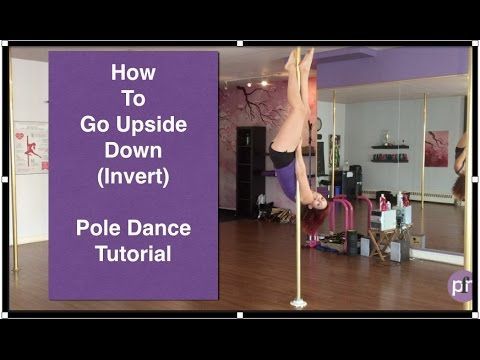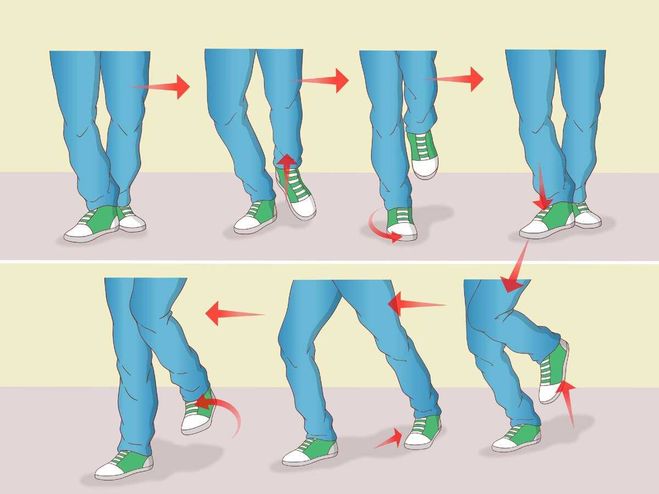How to dance chacha
Learn Basic Cha Cha Steps
Cha cha is a fun, flirtatious dance with playful energy. It's a blend of other Latin dances, especially mambo and rumba. The major difference between cha cha and mambo/rumba is a triple step (cha cha cha) that replaces the slow step.
- Basic steps
- Instructions & Diagrams
- Video
- Recommended Video Lessons »
Quick intro
Cha cha is widely recognizable by its catchy rhythm – one, two, cha, cha, cha. It's easy to learn and fun to dance.
Like so many Latin dances, it originates from Cuba. It was developed by the Cuban composer and violinist Enrique Jorrin in the middle of 1950s. Originally it was known as a slowed-down mambo or "the triple mambo", because of the three quick steps. It gained instant popularity due to its simplicity. In time it evolved into a separate dance and although it was originally known as the cha-cha-cha, the name was shortened to the cha-cha.
Did you know: Bruce Lee, the famous movie star and one of the greatest legends in martial arts, was also an accomplished Latin dancer. He won the Hong Kong Cha Cha Championship in 1958, when he was 18 years old.
Cha cha can be danced to almost any music with a good beat, from traditional Latin rhythms to club music, from country to pop. It's popularity can be heard in the music of Ricky Martin, Jennifer Lopez, Marc Anthony, Tom Jones, Carlos Santana, and many others. Cha cha is very much a dance of today.
Basic steps
Cha cha music is composed in 4/4 time (four beats to a bar of music). For each bar of music there are 2 slow and 3 quick steps, which may be counted as – one, two, cha, cha, cha or step, step, step, quick step, quick step. The footwork is simple and mostly focuses on just shifting weight from one foot to another.
Remember, five steps are taken to four beats of music. Also don't forget that the movements tend to be somewhat flirtatious.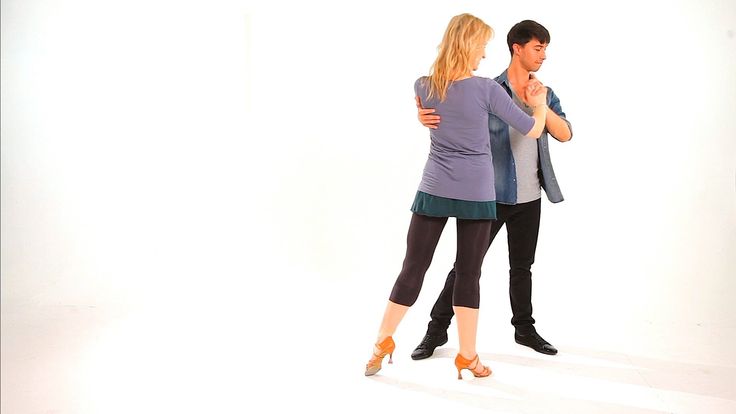 This is definitely a party dance!
This is definitely a party dance!
Instructions & Diagrams:
Partners face each other. Gentleman starts with the left foot, lady starts with the right foot. Basic ballroom hold.
Basic Side Step for Men
- Sidestep to the left with your left foot
- Step backward & left with your right foot
- Left foot in place, weight shifts to it
- Sidestep to the right with your right foot
- Move your left foot to your right foot
- Sidestep to the right with your right foot
- Step forward & right with your left foot
- Right foot in place, weight shifts to it
- Sidestep to the left with your left foot
- Move your right foot to your left foot
Basic Side Step for Women
- Sidestep to the right with your right foot
- Step forward & right with your left foot
- Right foot in place, weight shifts to it
- Sidestep to the left with your left foot
- Move your right foot to your left foot
- Sidestep to the right with your left foot
- Step backward & left with your right foot
- Left foot in place, weight shifts to it
- Sidestep to the right with your right foot
- Move your left foot to your right foot
Video
In this video Leon and Kim will first show you the basic step done "in place" and then with the side step:
more videos »
OK, now that we have the basic steps under our belt, let's explore further. In the following video Jaimee and Mark will show you the whole range of cha cha figures, starting, of course, with the basic:
Where to go next?
As you've seen in the second video, there's a lot that cha cha has to offer. To get to that next level we recommend these video lessons »
Learn to Dance Cha Cha
Dance InsanityCha Cha
Can you learn the basic ChaCha steps in 20 minutes? Just follow-along with this video tutorial to learn our top 10 Basic Cha Cha steps to get you going on the dance floor.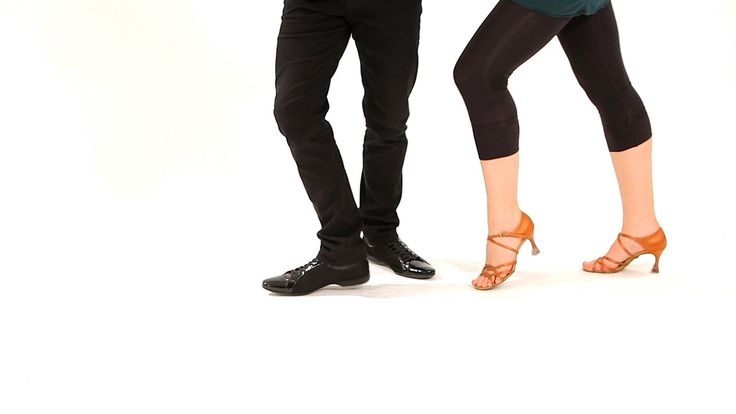 Even if you’ve been dancing the Cha Cha for a while, this is still a really good tutorial to reinforce must-have techniques and skills. You definitely can pick up extra tips to spruce up your dance skills!
Even if you’ve been dancing the Cha Cha for a while, this is still a really good tutorial to reinforce must-have techniques and skills. You definitely can pick up extra tips to spruce up your dance skills!
What you’ll learn in this Cha Cha lesson:
- Top 10 Basic Cha Cha steps for beginners
- Learn the Leader and follower parts separately
- Learn how to dance these 10 basic chacha steps with a partner.
- Simple partnering Techniques for Latin Ballroom dancing
- International Cha Cha Timing and rhythms
- A basic Cha Cha dance routine that you can practice with these 10 basic steps.
- How to dance to cha cha music
In addition, you’ll also be warned of common mistakes made in the Cha Cha, so you can start building good habits right away!
10 ChaCha Steps you’ll learn:
- Cha Cha Basic – 1:27 /CHACHA Timing – 2:12
- New Yorker – 3:02
- Under Arm Turn – 4:00
- Hand to Hand – 5:37
- Spot Turn – 7:00
- Shoulder to Shoulder – 9:47
- Runs – 11:13
- Basic in Place – 12:09
- Time Step – 13:43
- There and Back – 14:53
- Cha Cha Basic Routine for beginners (with counts): 16:10
- Cha Cha Basic Routine for beginners (with music & steplist): 18:13
- Cha Cha Basic Routine for beginners (with music): 19:11
For each of the above steps, you’ll learn:
A. What the step looks like with a partner
What the step looks like with a partner
B. Leader’s part
C. Follower’s part
D. Timing of the step
At the end of the 10 steps, you’ll put it together into a routine and finally dance along with us to music! OH YEAH! Don’t panic. Slow Cha Cha music, of course.
There is no hurry for you to learn it all at once. Remember, repetition is key. There is a lot of information, and body awareness as well as muscle memory that is required for Partner dancing. So, take your time, create some goals for what you want and start moving!
What is easy? What is challenging for you? Leave us a comment below. And if you have any questions, we’re happy to answer them. 🙂
If you’ve mastered these 10 cha cha steps. What’s next?
For those who want a little more challenge after this, you can check out some other videos such as:
Cha Cha Basic Armstyling (Intermediate Tutorial)
Basic Cha Cha – Back Chasse/ Lock Step Details (Beginner Tutorial)
How to dance Cha Cha Turkish Towel 5 Ways (Advanced Tutorial)
Want to learn the basic more slow?
Start with this other Basic Cha Cha Compact Chasse Step for Beginners Tutorial instead – where Tytus shows you the absolute basic step very slowly. After you’ve done that, then come back to this tutorial. Remember, this is a new language. So, repetition is key, and move at the pace that works best for you. Most of all, have fun!
After you’ve done that, then come back to this tutorial. Remember, this is a new language. So, repetition is key, and move at the pace that works best for you. Most of all, have fun!
Cha Cha Technique Essentials Course
Get Fast Spins Course
Cha-cha-cha (Latin American dance program)
Principles of movement and basics of dance:
- RHYTHM . Stocked rhythm. Fast and active dance. Isolation of the first, sometimes the first and third beats - brighter and more active. It's important to keep the timing. Cha cha cha step - timing - "I" - we bring out the thigh "A" - we bring out the leg "ONE". The timing for the syncopated CHA-CHA score is QuickQuick, followed by a slightly prolonged ONE or Slow score. - Syncopated cha cha count as quick quick and slow times is longer and wider. nine0010
- Footwork and lower center . There should not be two bent knees, one knee or two straightened, with steps it is necessary to collect the legs and bring them out through the "brush", stretching the knee of the free leg from the supporting leg.
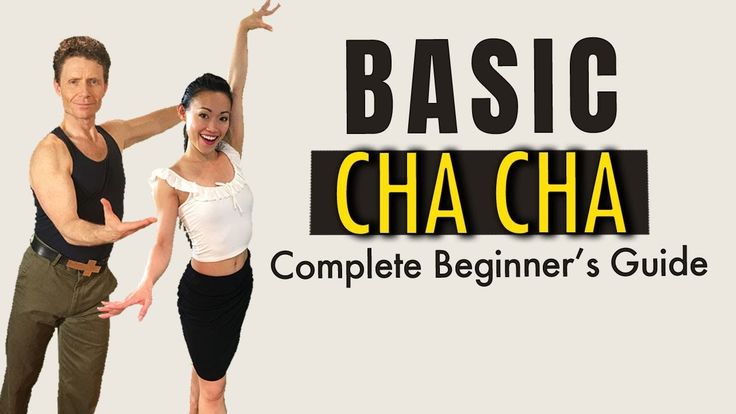 Compression of the rib and thigh should occur simultaneously with the advance.
Compression of the rib and thigh should occur simultaneously with the advance. - Upper center. Always keep the form in the top center - save the presentation.
- 2 level of dancing in cha-cha-cha: and and isolation are added - swing, rotation, stretching in the ribs. nine0005
Forward cha-cha-cha steps are performed from the toe, with the transition to the ball of the foot, then to the entire foot, the knee is fully extended, and the weight of the body is transferred to the supporting leg. Simultaneously with the straightening of the supporting leg, the heel of the free (from the weight of the body) leg rises, and the knee naturally bends, the ball of the foot touches the floor, you need to learn to “feel the floor”.
Steps back are performed first from the ball of the foot, then the toe and again to the ball of the foot with a further transition to the entire foot. The knee is fully extended and the weight of the body is transferred to the supporting leg. The free leg is slightly bent at the knee, remains in front in place, touching the floor with the ball of the foot. nine0005
The free leg is slightly bent at the knee, remains in front in place, touching the floor with the ball of the foot. nine0005
When the weight of the body is transferred to the supporting leg, the steps are performed with pressure on the floor, and the knee of the leg is pushed back. At the same time, the hip of the supporting leg is extended to the side and back so that the position of the upper part of the body remains unchanged. The movements of the hip girdle must be performed with a sense of proportion. Basically, the figures of the cha-cha-cha dance are performed without rises, falls and inclinations of the body.
When performing the steps, the legs remain natural and turn the feet outward. Only in side steps are the feet parallel. nine0005
Basic step - Check and lock, lock step, highway:
- Change of legs - Offset of the chest, bending the knee and returning to a flat neutral position on I . The heels are light, the chest is slightly forward
The heels are light, the chest is slightly forward
- Back step - we transfer the weight of the body to the back leg but leave the upper center in front and perform stretching, we carry out a quick movement to "D" in the count of two.
- Forward step - When moving forward, the diagonal offset of the main part of the torso is used first. nine0037 - Check and Lock, lock step - stop defective step, hind leg with an emphasis on the floor with the big toe with the heel turned inward. Closed knees after the lockstep forward to the count and pull the knee like a bow and foot and take a step for once. We start with back replay. Fours - re, times (comma). Hip kick forward for one (fast pendulum).
- Side step, Highway - Preparation of the side and ribs in the direction of the side step. Highway to the side at a time, a step of medium length, so that there is an opportunity to work out, the foot of the supporting leg is approximately at the level of the ribs. Fast biting nature of the step. Pendulum movement in the hips. Foot culture - using the muscles of the buttocks and sliding the bent leg on the floor and straightening at the very last moment. Flick active offensive. nine0005
Fast biting nature of the step. Pendulum movement in the hips. Foot culture - using the muscles of the buttocks and sliding the bent leg on the floor and straightening at the very last moment. Flick active offensive. nine0005
Hands:
Impact in hands - starts in slow motion -acceleration -dot! A beautiful finished line, if the arm is to the side, then just below the shoulder.
Types of highway: main highway to the sides , time step chasse , compact chasse (change of feet), ronde of highway (start leg point forward, ronde, step behind, time step, count and 4 and 1), hip twist chasse (count and 4 and 1), slip close chasse, whisk chasse, merengue chasse (running highway forward), volta cross chasse (3 variants), 9 Chasse
Cuban breaks - obligatory swing action in the hips
Music rhythm exercise for beginners - stepping to the beat. Allocation of the account ONCE.
Allocation of the account ONCE.
Heels on the floor and transition from foot to foot with rotation of the hips without lifting the heels.
Pelvic rotation - counter-movement of the shoulders and hips.
8 hips - feet on the floor. nine0037 Change of legs (Time step) - stretching of the knees and sides
Timing exercises for syncopated cha-cha counting.
Highway to the side - time step (with hip work - figure eight, compression of the shoulder blade and thigh)
Basic forward step (Lock step) - begins with back replace (back step), Cha-cha (comma) ONE - allocation of accounts, do not merge these accounts! In the check, the knees are stretched between themselves, the side is preparing for the execution of the next step, then an active attack, a hip forward kick. nine0037 Basic side step (hip up, sides, rotation)
Basic move (forward, backward, lock)
Close basic movement
Open basic movement
New York - .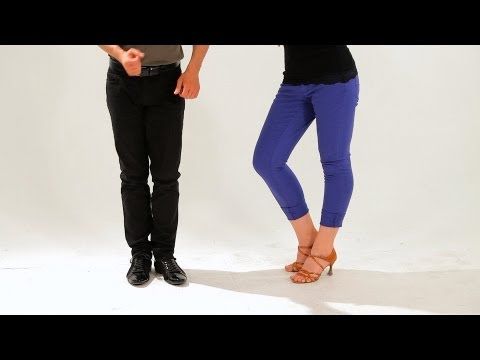 Repetition of New York in one direction, in 2 directions. Adding a clear position in the hands (to the diagonal, to the sides, forefingers, to the body). Stretched lines, wide chest.
Repetition of New York in one direction, in 2 directions. Adding a clear position in the hands (to the diagonal, to the sides, forefingers, to the body). Stretched lines, wide chest.
Side dribble - step forward, lock - body straight, back side dribble. nine0004
Cuban breaks with rotation - Cuban breaks 2, rotation.
Routine 1 : back basic, hip-twist, highway compact, leg collection and the same on the other leg. 5-7 tracks
-2 types of work for timing and stretching - maximum filling on and
Routine 2: Beck basic, Hip twist, compact highway, check twist, rond, compact highway, spot turn, hip twist, highway compact, foot collection.
history and features of popular Latin American dance
Cha-cha-cha: the history and features of the popular Latin American dance
It is young, beautiful and energetic. How can you talk about dance like that? Yes, because we are talking about cha-cha-cha, which feels light, playful and carefree.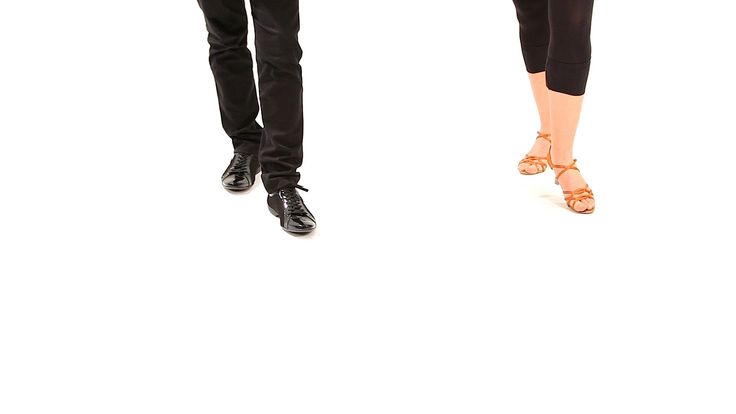 Despite its simplicity, the style continues to fascinate audiences of all ages. What is special about this dance and where did it originate? We offer you to learn more about the history of cha-cha-cha right now.
Despite its simplicity, the style continues to fascinate audiences of all ages. What is special about this dance and where did it originate? We offer you to learn more about the history of cha-cha-cha right now.
History of dance
The origin of cha-cha-cha is closely connected with the history of Cuba, where, in fact, this dance direction originated. It all started with the appearance on the future island of Liberty of the English folk dance contradance. This happened in the XVIII century, when Havana was under the occupation of the British. Cubans liked the uncomplicated movements of contradans and became the basis for creating their own national dance, which they began to call dansa. nine0005
The recognition of Cuba's independence in 1895 brought a flood of planters to the island. They arrived along with their slaves, who were to change the dance traditions of the local population. The Africans brought ritual dances with them, attracting attention with a fast rhythm and bold movements of the hips. It is not known who came up with the idea of mixing dance and African culture into one dance cocktail, but it happened. This is how the danzón appeared, which gained popularity in the upper strata of Cuban society. nine0005
It is not known who came up with the idea of mixing dance and African culture into one dance cocktail, but it happened. This is how the danzón appeared, which gained popularity in the upper strata of Cuban society. nine0005
While the beau monde enthusiastically danced the danzón, the common people honed their skills in performing rumba and other African dances. In the end, the inevitable happened - the merger of danson and rumba. But it was not easy to move in the fast pace of the new direction, called mambo - the dancers barely had time to adapt to the rhythm of the music.
Local composer Enrique Horrin decided to make life easier for Cubans who could not imagine their life without dancing. He wanted to create new music with a more calm and at the same time catchy melody. Enrique's experiments ended at 1949 with the composition "La enganadora", with which the real story of cha-cha-cha begins. Although initially the musician called the new rhythm "mambo-rumba".
What was Horrin's innovation? First, he made the rhythm more distinct.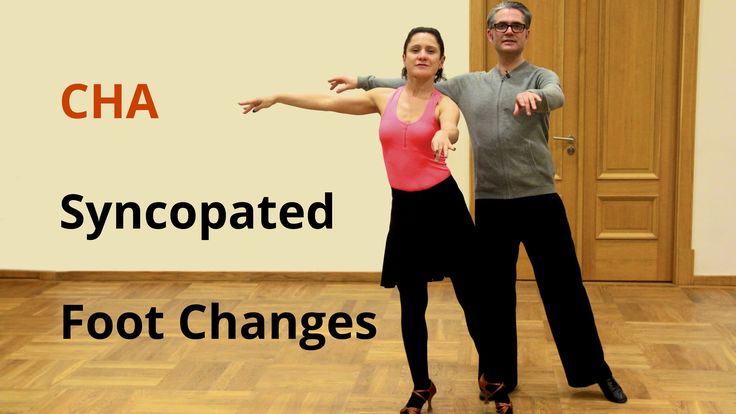 Secondly, I decided to do without the introduction or introduction, which was typical for the danzón. Thirdly, he invited all the musicians of the orchestra to sing in unison. The choral performance was to the liking of the public and Enrique himself. It seemed to him that the lyrics in this case sounded more distinct. And finally, he changed the accents in the music so that the dancers could make movements even without instrumental accompaniment. nine0005
Secondly, I decided to do without the introduction or introduction, which was typical for the danzón. Thirdly, he invited all the musicians of the orchestra to sing in unison. The choral performance was to the liking of the public and Enrique himself. It seemed to him that the lyrics in this case sounded more distinct. And finally, he changed the accents in the music so that the dancers could make movements even without instrumental accompaniment. nine0005
A light, cheerful and festive dance quickly won the love of the people of Cuba. In the middle of the 20th century, in almost every local street cafe you could watch the cha-cha-cha dance. Considering that Liberty Island was a favorite vacation spot for Americans, one should not be surprised at the speed of the spread of dance in the United States.
Europe does not stand aside either. In 1952, Pierre Lavelle, an English choreographer, arrived on the island. The unusual manner of the Cubans to dance the rumba did not leave him indifferent.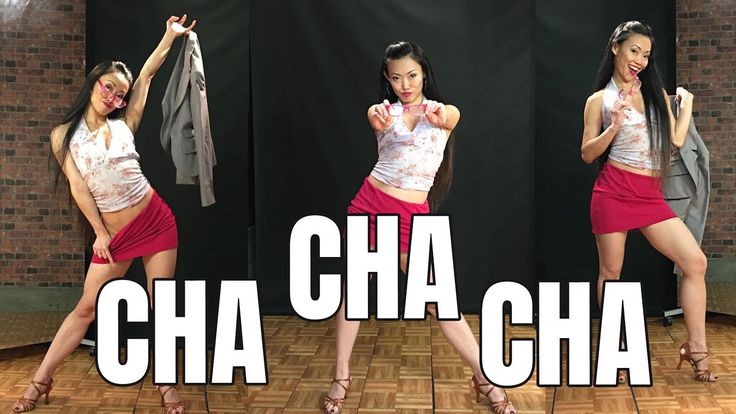 Without thinking twice, Pierre "took away" the original dance from the continent - this is how cha-cha-cha spread throughout European countries. nine0005
Without thinking twice, Pierre "took away" the original dance from the continent - this is how cha-cha-cha spread throughout European countries. nine0005
Despite its short history, the dance has changed. For example, if earlier chasse, sliding steps, it was customary to dance on half-bent legs, now pas are performed on straight lines. But small deviations do not interfere with enjoying cha-cha-cha, its expressiveness, naturalness and clarity. The number of people wishing to master Latin American choreography is not decreasing. In addition, teachers say: everyone can master this dance.
Best cha-cha melodies
"Sway" - many associate cha-cha-cha with this melody. To date, there are at least 30 cover versions of this composition. She is best known for the film Let's Dance. Despite its English title, the song has Mexican roots, as it was written by Pablo Beltrán Ruiz, who led the orchestra in Mexico City.
"Sway" (listen)
"El Jamaiquino" or "The Man from Jamaica" is the first composition in the cha-cha-cha genre, which was destined to conquer New York in the mid-1950s.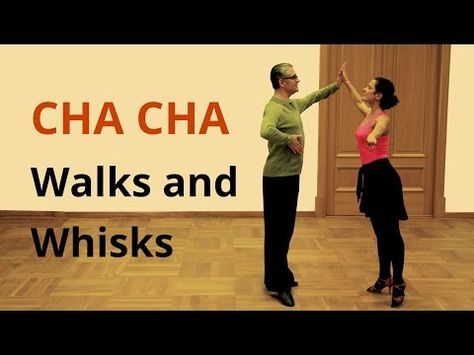 The light, danceable tune played almost non-stop on the radio, allowing every resident of the city to enjoy Cuban culture. The song was especially popular performed by La Playa, although it was originally performed by Nino Rivera back in 1944. In 1954, Tito Rodriguez, a famous Latin American singer, worked on "El Jamaiquino". To the usual set of musical instruments, he added "quijada", which is a donkey's jaw with rattling teeth. nine0005
The light, danceable tune played almost non-stop on the radio, allowing every resident of the city to enjoy Cuban culture. The song was especially popular performed by La Playa, although it was originally performed by Nino Rivera back in 1944. In 1954, Tito Rodriguez, a famous Latin American singer, worked on "El Jamaiquino". To the usual set of musical instruments, he added "quijada", which is a donkey's jaw with rattling teeth. nine0005
"El Jamaiquino" (listen)
"Rico Vasilon" is a creation of the Cuban pianist Ruben Gonzalez. And although the composer is better known as the founder of a different musical style - sleep, the rhythms of cha-cha-cha were not alien to him. The composition is worth listening to for everyone who wants to know how a real chacha sounds.
"Rico Vasilon" (listen)
"Mira Pa Dentro" Spanish musician Carlos Jean. The song was recorded in 2003 and still does not lose its relevance for all connoisseurs of Cuban dance.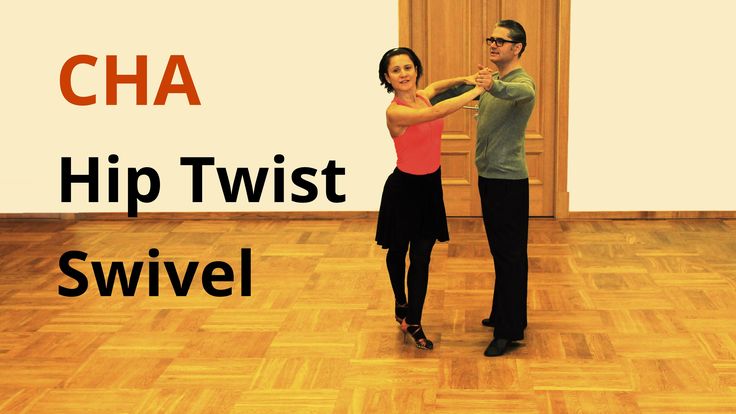 The melody literally makes the body move, beating a clear triple step. nine0005
The melody literally makes the body move, beating a clear triple step. nine0005
"Mira Pa Dentro" (listen)
"Capullito De Aleli" is a song that dancers often use when performing cha-cha. Its author is Caetano Veloso, a Brazilian musician. The composition is filled with romantic lyrics, which are enhanced by the singer's soft voice. It is not surprising that fans of the genre liked her.
"Capullito De Aleli" (listen)
What is cha-cha-cha? Dance features
Cha-cha-cha is, of course, the hallmark of the Cuban people and an indispensable part of the Latin American ballroom dancing program. It is not surprising that the direction still continues to find fans around the world.
Say "cha-cha-cha" out loud. Do you feel a clear, fast rhythm, which seems to be embedded in the very name of the dance? According to one version, the style got its original name thanks to the dancers.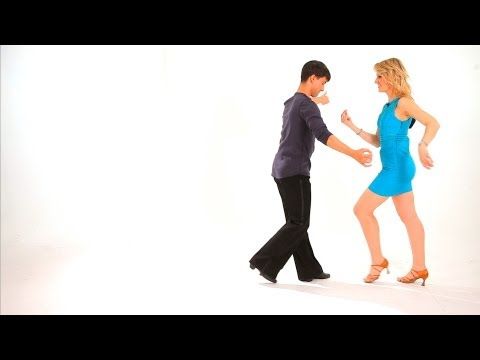 They followed the sounds of the maracas and beat additional blows under them, exactly three times. An attempt to beat a new melody served as the basis for the name of the dance. nine0005
They followed the sounds of the maracas and beat additional blows under them, exactly three times. An attempt to beat a new melody served as the basis for the name of the dance. nine0005
According to another version, the style was named after leguminous plants with "thundering" fruits of cha-cha, growing in India. Rattles were made from them, which were used in the creation of ritual music. Another legend says that the direction owes its name to the Cuban guaracha dance.
Cha-cha-cha can be distinguished from other genres by the following features:
-
musical accompaniment is characterized by a clear rhythm and moderate tempo. If we talk about the international style of performance, then the tempo is 32 beats per minute; nine0005
-
movements are expressive, energetic, fast, without ups and downs. The main combination is triple steps, which is why the dance is sometimes called the “triple mambo”.
 All this is complemented by intense movements of the partner's hips;
All this is complemented by intense movements of the partner's hips; -
the nature of the dance is incendiary, cheerful, carefree and playful. The main role in the couple belongs to a woman who seems to be flirting and flirting. At the same time, all movements are designed to show the beauty and gracefulness of the curves of the female body, which enhances the intensity of passions in a couple and in the auditorium; nine0005
-
dance cha-cha-cha both in pairs and at a distance. In any case, it is always two - he and she - whose hot feelings turn into an extraordinary performance in terms of energy.
Interesting facts
- Enrique Horrin recorded most of his melodies in the cha-cha-cha genre playing the violin as part of the America orchestra. The team of musicians performed modern rhythms with pleasure, delighting the people of Havana. But Enrique had to leave the orchestra due to disagreements with director Ninon Mondejar.
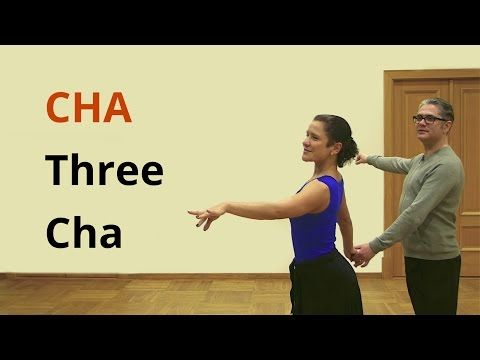 He claimed that the creation of a new musical style was his work. Horrin couldn't bear it. nine0010
He claimed that the creation of a new musical style was his work. Horrin couldn't bear it. nine0010 -
"Silver Star" is Horrin's latest composition in the rhythms of the world-favorite dance genre. He wrote it in 1952.
-
In 1958, the cha-cha championship was held in Hong Kong. It was won by a 17-year-old boy, for whom fate had prepared a completely different path. It was Bruce Lee. He started learning to dance at the age of 13. It turns out that it took him only 4 years to become the best in this field.
nine0007 -
He received the status of a participant in the Latin American cha-cha-cha dance competition in 1954, a very short time after his official birth. This speaks of the great interest and popularity of the genre among dancers and those who are far from the world of dance.
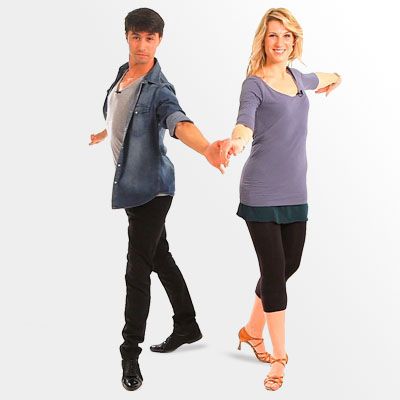
-
In English, you can often hear that the dance is simply called chacha. This is due to the innovation introduced by the American choreographer Arthur Murray. Initially, the movements were performed under the count of “one, two, cha, cha, cha”, where 5 cycles are clearly traced. Murray used a different count: "one, two, three, cha-cha." At the same time, “cha-cha” is one measure, of which there were 4 in total. Thanks to this, a new name was born. nine0005
-
The popularity of cha-cha-cha has not gone unnoticed by the film industry. His performance can be seen in films such as "And God Created Woman" (danced by Brigitte Bordeaux) and "Dirty Dancing" (a clear rhythm is beaten by Patrick Swayze and Jennifer Grey).
-
The summer of 1954 for New York music lovers passed under the sign of "cha-cha-cha". Two out of three records were released in this genre.
-
Cha-cha-cha is sometimes called the dance of coquettes due to the characteristic expressive movements of the hips that the partners make.
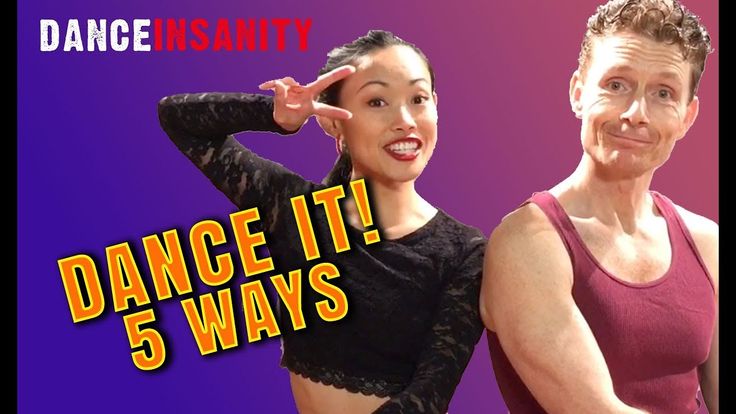
According to the rules of ballroom dancing, the distance between partners during the performance of cha-cha-cha should not be more than 15 cm.
